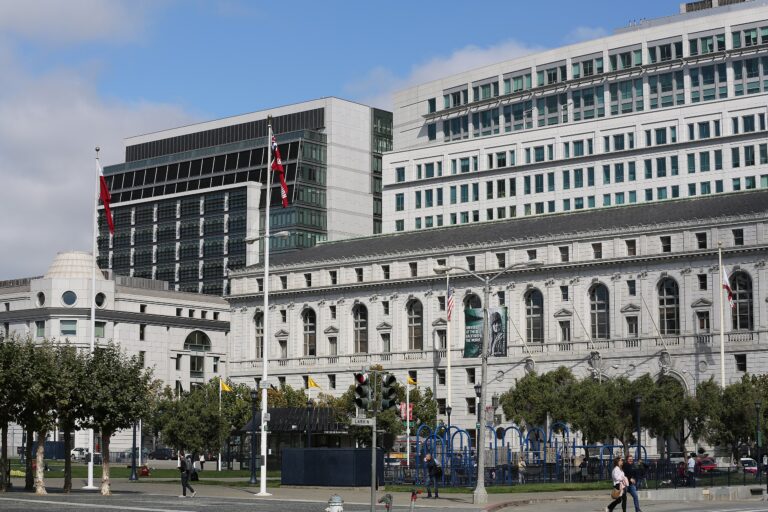The nature of work in America is changing, with increasingly sophisticated automation, advanced digital platforms, and other technological innovations serving as a catalyst. And these transformations are only adding to the challenges facing the American labor force and its readiness to succeed at work, especially younger workers who are relying on their secondary educations to jump-start their careers. In a survey released by Achieve in 2005, employers estimated that about 39 percent of high school graduates were unprepared to meet entry-level job expectations, and the same percentage of recent graduates in the labor market found “gaps” in their workforce preparation. Even more notable, employers in the same survey estimated that about 45 percent of recent graduates in the workforce were not prepared to advance in their companies beyond entry-level positions, a problem that at the time resulted in millions of job openings that companies are unable to fill with the right people. A similar 2011 study by researchers at Johns Hopkins University and the University of Arizona found similar results, with about 40 percent of high school graduates unprepared for career training.
And these numbers could become even more stark as technology continues to impact the labor landscape, leaving millions of Americans without the skills necessary to secure and maintain employment. For instance, technological advancements will increasingly polarize “labor-market opportunities between high- and low-skill jobs, unemployment and underemployment (especially among young people), and stagnating incomes for a large share of households.” Moreover, while automation “brings the promise of higher productivity, increased efficiencies, safety, and convenience,” it also carries the danger — continually increasing as robotics and artificial intelligence advances — of job displacement and depressed wages.
Against this backdrop, high schools today have an important role to play in preparing their graduates to succeed in a dynamic labor market that is fast adapting to new technological conditions, and to the continuing effects of large-scale economic globalization. Today, secondary education is viewed as inextricably linked with the labor market, with and without college as an intermediate step. As one education administrator has noted, a high school degree today “is viewed as a minimum requirement for success in terms of employment, salary, and future career choices.” High schools are also crucial drivers of America’s economic vitality; after all, if companies cannot locate and hire workers with the requisite skills, then they will not be able to effectively operate, grow, and thrive.
Fortunately, growing numbers of leaders in business and politics are recognizing the role that high school can play in addressing the needs of the twenty-first century workforce. For example, Laurene Powell Jobs recently organized and funded XQ: The Super School Project to reward schools and school systems that are changing the nature of education in America, and to encourage other schools to follow suit. From a school that plans to require four years of computer science to a school that plans to partner with local nonprofits, cultural institutions, businesses, and universities to provide its students with career experience, XQ provided $10 million grants to ten “Super Schools” as part of its campaign to “reimagine high school.”
Powell Jobs is far from alone in her focus on reinventing the U.S. high school experience. For instance, five technology companies — IBM, Motorola, Microsoft, Cisco, and Verizon — each partnered with a Chicago public high school to develop STEM-focused curricula, as well as offer internships and job interviews to graduating students. IBM has similarly partnered with Pathways in Technology Early College High School in Brooklyn, and — along with public universities in New York City — has worked with the school “to shape a curriculum and academic approach that allows students to graduate from high school with an associate degree,” as well as arrange to have IBM employees individually mentor each of the school’s 230 students and give those students “priority” for IBM jobs upon graduation. On the West Coast, the recently elected mayor of Sacramento plans to offer paid, year-round internships to at least half of the city’s local high school juniors and seniors by the end of his first term. This is just a snapshot of the many examples of education reform efforts occurring in schools from coast to coast.
These reform efforts are laudable, but reformers such as Powell Jobs would be wise to mind the means that they use to accomplish their ends.
For one, Powell Jobs and other reformers should avoid inaccuracy and hyperbole in their advocacy for reform, as such rhetoric may fuel the implementation plans that have not been fully vetted and lead to a denigration of the teachers that make the system work. Powell Jobs is a proponent of the “broken system” narrative, which advances the view that there is a fundamental problem with America’s contemporary high schools: they are obsolete as designed. As Powell Jobs sees it, American high school “was designed for early 20th-century workforce needs. In the last 100 years, the rest of our world has changed radically, but schools have not. And workforce needs have changed radically.”
Russlynn Ali — a former Assistant Secretary for Civil Rights in the U.S. Department of Education and now CEO of Powell Jobs’ XQ — likewise buys into the “broken system” narrative. To Ali, our world has “gone from a Model T to a Tesla, from a switchboard to a smartphone, from a typewriter to a touchscreen, and our high schools today look exactly the way they did 100 years ago.” In other words, in the eyes of Ali and Powell Jobs, the structure and substance of America’s high schools requires nothing short of an immediate “sea change” to match student skills with the needs of the developing twenty-first century workforce.
However, in making their case against the high school status quo, Ali and Powell Jobs create a past that never existed, conflating the development and proliferation of high schools with shifting American labor market needs. For starters, high schools have not been traditionally designed to meet the workforce demands of a particular historical moment. Historically, as Professor Jack Schneider has noted, “a high school education had little to do with workforce needs. That is, unless speaking Latin and Greek was a job requirement.”
Moreover, Ali and Powell Jobs obscure the significant changes that have occurred in American secondary education in the last century, says Professor Schneider; after all, “[a] century ago, teachers were largely untrained and oversaw very large classes in which rote memorization was the rule. Students brought their own books from home and the curriculum varied from school to school. Courses like zoology and technical drawing were common and classical languages still maintained a strong foothold.” While desks have largely remained the same and teachers still do much of the talking, secondary education was simply a “different world” a century ago.
Although historically inaccurate, Ali and Powell Jobs’ rhetoric nevertheless works to generate urgency for their high school reform movement — but with 50 million students today attending about 100,000 schools led by over 3 million teachers, they and other reformers would do well to check their ambition with caution. Doing so maximizes their likelihoods of success, for students, schools, and society.






Daily News & Commentary
Start your day with our roundup of the latest labor developments. See all
September 4
Eighth Circuit avoids a challenge to Minnesota’s ban on captive audience meetings; ALJ finds that Starbucks violated the NLRA again; and a district court certifies a class of behavioral health workers pursuing wage claims.
September 3
Treasury releases draft list of tipped positions eligible for tax break; Texas court rules against Board's effort to transfer case to California; 9th Circuit rules against firefighters seeking religious exemption to COVID vaccine mandate.
September 2
AFT joins Target boycott, Hilton workers go on strike in Houston, and the Center for Labor & A Just Economy releases a new report
September 1
Labor Day! Workers over Billionaires protests; Nurses go on strike, Volkswagen ordered to pay damages.
August 31
California lawmakers and rideshare companies reach an agreement on collective bargaining legislation for drivers; six unions representing workers at American Airlines call for increased accountability from management; Massachusetts Teamsters continue the longest sanitation strike in decades.
August 29
Trump fires regulator in charge of reviewing railroad mergers; fired Fed Governor sues Trump asserting unlawful termination; and Trump attacks more federal sector unions.